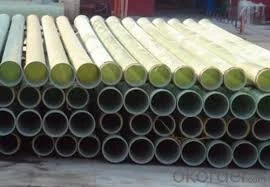
-
 Afrikaans
Afrikaans -
 Albanian
Albanian -
 Amharic
Amharic -
 Arabic
Arabic -
 Armenian
Armenian -
 Azerbaijani
Azerbaijani -
 Basque
Basque -
 Belarusian
Belarusian -
 Bengali
Bengali -
 Bosnian
Bosnian -
 Bulgarian
Bulgarian -
 Catalan
Catalan -
 Cebuano
Cebuano -
 China
China -
 China (Taiwan)
China (Taiwan) -
 Corsican
Corsican -
 Croatian
Croatian -
 Czech
Czech -
 Danish
Danish -
 Dutch
Dutch -
 English
English -
 Esperanto
Esperanto -
 Estonian
Estonian -
 Finnish
Finnish -
 French
French -
 Frisian
Frisian -
 Galician
Galician -
 Georgian
Georgian -
 German
German -
 Greek
Greek -
 Gujarati
Gujarati -
 Haitian Creole
Haitian Creole -
 hausa
hausa -
 hawaiian
hawaiian -
 Hebrew
Hebrew -
 Hindi
Hindi -
 Miao
Miao -
 Hungarian
Hungarian -
 Icelandic
Icelandic -
 igbo
igbo -
 Indonesian
Indonesian -
 irish
irish -
 Italian
Italian -
 Japanese
Japanese -
 Javanese
Javanese -
 Kannada
Kannada -
 kazakh
kazakh -
 Khmer
Khmer -
 Rwandese
Rwandese -
 Korean
Korean -
 Kurdish
Kurdish -
 Kyrgyz
Kyrgyz -
 Lao
Lao -
 Latin
Latin -
 Latvian
Latvian -
 Lithuanian
Lithuanian -
 Luxembourgish
Luxembourgish -
 Macedonian
Macedonian -
 Malgashi
Malgashi -
 Malay
Malay -
 Malayalam
Malayalam -
 Maltese
Maltese -
 Maori
Maori -
 Marathi
Marathi -
 Mongolian
Mongolian -
 Myanmar
Myanmar -
 Nepali
Nepali -
 Norwegian
Norwegian -
 Norwegian
Norwegian -
 Occitan
Occitan -
 Pashto
Pashto -
 Persian
Persian -
 Polish
Polish -
 Portuguese
Portuguese -
 Punjabi
Punjabi -
 Romanian
Romanian -
 Russian
Russian -
 Samoan
Samoan -
 Scottish Gaelic
Scottish Gaelic -
 Serbian
Serbian -
 Sesotho
Sesotho -
 Shona
Shona -
 Sindhi
Sindhi -
 Sinhala
Sinhala -
 Slovak
Slovak -
 Slovenian
Slovenian -
 Somali
Somali -
 Spanish
Spanish -
 Sundanese
Sundanese -
 Swahili
Swahili -
 Swedish
Swedish -
 Tagalog
Tagalog -
 Tajik
Tajik -
 Tamil
Tamil -
 Tatar
Tatar -
 Telugu
Telugu -
 Thai
Thai -
 Turkish
Turkish -
 Turkmen
Turkmen -
 Ukrainian
Ukrainian -
 Urdu
Urdu -
 Uighur
Uighur -
 Uzbek
Uzbek -
 Vietnamese
Vietnamese -
 Welsh
Welsh -
 Bantu
Bantu -
 Yiddish
Yiddish -
 Yoruba
Yoruba -
 Zulu
Zulu
Innovative Solutions for Enhanced Friction Response in Absorber Technology
Understanding FRP Absorbers A Dive into Their Significance and Applications
Fiber Reinforced Polymer (FRP) absorbers have emerged as a significant innovation in various industries due to their unique properties and versatility. The term FRP refers to a composite material made from a polymer matrix reinforced with fibers. This combination offers a lightweight, durable, and corrosion-resistant solution suitable for a wide range of applications, particularly in the realms of civil engineering, aerospace, and automotive sectors.
What Are FRP Absorbers?
FRP absorbers primarily serve as sound and vibration dampening solutions. Their structure allows them to absorb sound waves effectively, reducing noise pollution in environments such as industrial facilities, highways, and residential areas. The core material of FRP consists of synthetic fibers, including glass, carbon, or aramid, which are embedded in a plastic matrix. This structure has a high strength-to-weight ratio, making FRP absorbers efficient replacements for traditional materials.
Key Properties
One of the most notable properties of FRP absorbers is their lightweight nature. Unlike conventional material like concrete or metal, FRP propagates less load on structural frameworks, minimizing the need for extensive support systems. Furthermore, FRP materials are resistant to various environmental factors such as moisture, chemicals, and UV radiation. This resistance not only enhances their lifespan but also reduces maintenance costs associated with periodic inspections and repairs.
Applications in Various Industries
frp absorber

FRP absorbers have seen diverse applications across various sectors. In civil engineering, they are utilized in the construction of bridges, buildings, and noise barriers. Their ability to absorb vibrations ensures structural integrity and longevity, while also providing comfort to those nearby. In aerospace, the lightweight characteristic of FRP helps enhance fuel efficiency in aircraft by reducing weight. Similarly, in the automotive industry, manufacturers are increasingly using FRP components to improve vehicle performance and safety.
In addition to these sectors, FRP absorbers also play a crucial role in renewable energy installations, such as wind turbines. By dampening vibrations caused by rotating blades, they ensure smoother operations and improve the turbine's lifespan. Furthermore, FRP absorbers can be employed in cooling towers and HVAC systems, where efficient sound absorption is vital for maintaining a comfortable work and living environment.
Future Prospects
As sustainability becomes an increasingly pressing concern, the demand for innovative materials like FRP is expected to grow. With ongoing research and development, we can anticipate advancements in FRP technology, leading to improved performance characteristics and cost-effectiveness. Additionally, the incorporation of recycling processes for FRP materials may enhance their appeal as a sustainable choice.
Conclusion
FRP absorbers represent a transformative solution in the pursuit of noise and vibration mitigation across numerous sectors. Their unique combination of lightweight, strength, and durability positions them as an ideal choice for modern engineering challenges. As industries continue to seek innovative ways to improve environmental comfort and structural performance, FRP absorbers are likely to play an increasingly vital role in shaping the future of engineering and construction.









